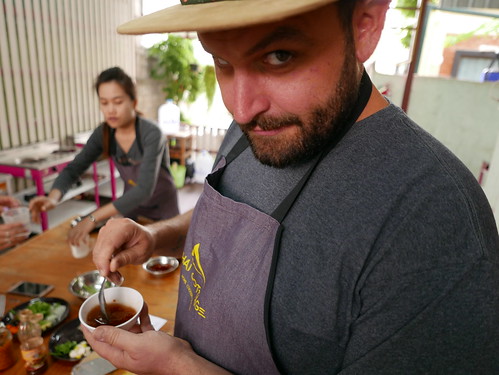Ing; perceptions of risky behaviours linked with AED use, and intended future use PubMed ID:http://www.ncbi.nlm.nih.gov/pubmed/21261520 of AEDs. When participants noted certain rewards or negative consequences from AED use, the researcher followed up having a question asking how this differed from occasions when only alcohol was consumed.Sample characteristicsTo complement data gathered by means of sessions of observation, in-depth interviews [29,30] have been performed with ten young (aged 211 years) customers of AEDs who regularly consumed no less than two AEDs throughout a session of alcohol use. We utilised a purposive sampling strategy and targeted people in between the ages of 185 provided that the limited epidemiological research available shows that AED shoppers are in this age bracket [5,9,10]. Interviewees integrated five participants who had been offered an information and facts card by the researcher at the completion of sessions of observation, and 5 other buyers of AEDs who have been accessed through a process of e-mail snowballing. Patrons in venues who have been consuming AEDs have been given a card with particulars about the study and invited to make contact with the researcher if they wished to participate in an interview. Additionally, an e mail was sent out to personal contacts of the initially author having a path to forward the e-mail on to broader individual networks. The e mail invited eligible possible participants (over the age of 18, typical buyers of AEDs) to contact the researcher if they were enthusiastic about participating in an in-depth interview. All participants signed a written data and consent kind before commencing the interview. In-depth interviews have been conducted in a private space easy for both the interviewer and interviewee. Interviews lasted among 30 and 60 minutes and participants have been reimbursed AU  30 to compensate for time and travel expenses. The interview schedule was semi-structured, enabling a particular amount of control over the queries, although also allowing responses to dictate the flow of conversation and difficulties FRAX1036 biological activity arising [31]. The interview schedule was informed by a review of the literature on AEDs and covered demographics; patterns of alcohol use; patterns of power drink use; patterns of AED use (frequency and amount); age of 1st use of these drinks; duration of use; places of use; preference of beverages; a detailedSix of your interviewees had been male along with the imply age of participants was 25 (variety 191). Interviewees either worked (n = eight) or studied (n = 2) complete time, and owned their own home (n = 1), lived within a rental property (n = 7) or lived with their parents (n = 2). Participants could be regarded as `socially incorporated individuals’ in the sense that they had been well-integrated young folks with ongoing ties to mainstream society through work and study [32,33].AnalysisData collected through observation and in-depth interviews were stored and analysed utilizing NVivo9, a qualitative software program package that enables thematic and content evaluation of significant amounts of text [34]. Our strategy to information collection and analysis was inductive [35,36], with no preconceived notions held about what the findings in the analysis will be. Combined content and thematic analyses had been deemed essentially the most appropriate way of systematically analysing essential themes across the two information sources. Initially, a content evaluation was performed which involved establishing a list of categories or themes that had been commonly identified across the fieldnotes and interviews, then counting the amount of times that these themes have been evident [37.
30 to compensate for time and travel expenses. The interview schedule was semi-structured, enabling a particular amount of control over the queries, although also allowing responses to dictate the flow of conversation and difficulties FRAX1036 biological activity arising [31]. The interview schedule was informed by a review of the literature on AEDs and covered demographics; patterns of alcohol use; patterns of power drink use; patterns of AED use (frequency and amount); age of 1st use of these drinks; duration of use; places of use; preference of beverages; a detailedSix of your interviewees had been male along with the imply age of participants was 25 (variety 191). Interviewees either worked (n = eight) or studied (n = 2) complete time, and owned their own home (n = 1), lived within a rental property (n = 7) or lived with their parents (n = 2). Participants could be regarded as `socially incorporated individuals’ in the sense that they had been well-integrated young folks with ongoing ties to mainstream society through work and study [32,33].AnalysisData collected through observation and in-depth interviews were stored and analysed utilizing NVivo9, a qualitative software program package that enables thematic and content evaluation of significant amounts of text [34]. Our strategy to information collection and analysis was inductive [35,36], with no preconceived notions held about what the findings in the analysis will be. Combined content and thematic analyses had been deemed essentially the most appropriate way of systematically analysing essential themes across the two information sources. Initially, a content evaluation was performed which involved establishing a list of categories or themes that had been commonly identified across the fieldnotes and interviews, then counting the amount of times that these themes have been evident [37.